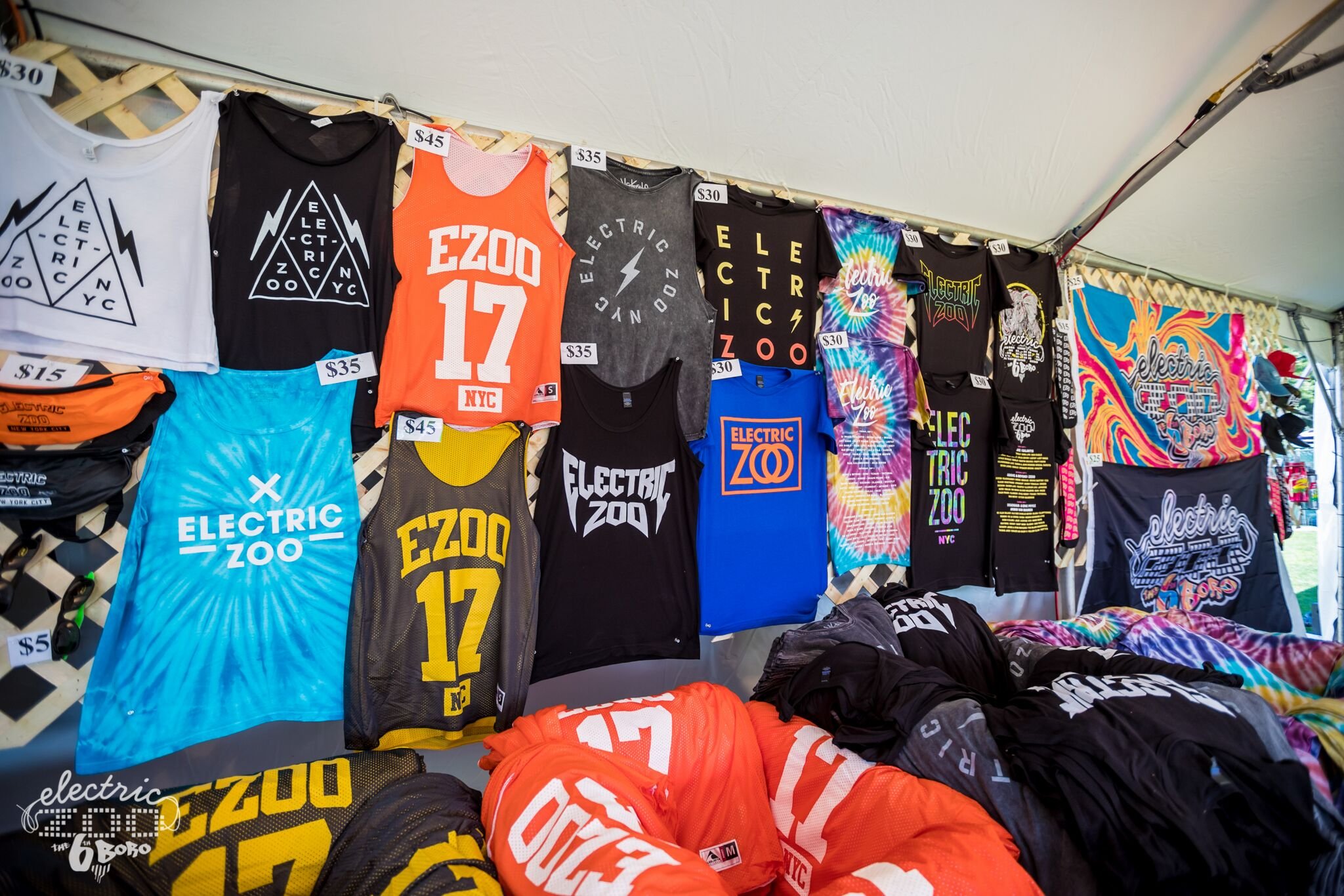Rethinking Merch Development
In today's music industry, the creation and sale of merchandise have transcended mere promotional tactics, evolving into a critical revenue stream. In an era dominated by streaming, where income from traditional sales is often eclipsed by merchandise profits, the significance of merchandising is undeniable. Fans not only expect but eagerly anticipate artist-branded products, contributing to a global merchandise market that soared to $4.85 billion in 2022, marking a 9% increase in fan purchases (atVenu). This trend underscores the imperative of effective merchandising strategies, making it a cornerstone of a musician's financial success.
Electric Zoo merchandise
Despite its importance, many music managers find themselves navigating unfamiliar territory in product development and sales planning. While some have adapted or sought partnerships to manage this aspect, merchandise often remains a secondary concern, overshadowed by other facets of an artist's career. This approach commonly leads to prioritizing ease of production and sales over innovation and fan engagement. Consequently, merchandise offerings tend to be generic, focusing more on convenience, ie graphics and logos, than on extending an artist's deeper creative vision or optimizing fan engagement and sales potential.
Remarkably, the music merchandising industry has largely remained static since the 1960s, with a heavy reliance on standard items like t-shirts, hoodies, and caps. The primary strategy involves purchasing "blanks" and customizing them with logos or tour graphics. This method minimizes upfront costs and theoretically allows for flexible inventory management. However, it also limits control over product design, resulting in a narrow range of styles, material quality, and price points. Additionally, this approach often leads to stockouts of popular sizes like Large, causing lost sales opportunities and a lack of diverse pricing that could cater to a broader fan base.
This focus on "blanks" and standard assortments frequently culminates in a lackluster retail experience. Little consideration is given to how merchandise is presented at venues, how it aligns with the demographic profile of the location, or the strategic planning of inventory. This can result in cumbersome sales processes, like rummaging through boxes for specific sizes, leading to customer frustration and impeding the buying experience. In a live music setting, where fans are emotionally invested and ready to spend, such retail shortcomings can significantly diminish sales and fan satisfaction.
Addressing these challenges necessitates a paradigm shift in music merchandise creation and sales. Drawing inspiration from the fashion industry, which excels in creating unique products tailored to customer needs, musicians can enhance their merchandising approach. This involves starting with a deep understanding of fan preferences, including price sensitivity, trends, and demographics. Additionally, considering the diversity of venue locations can lead to more curated assortments and potentially unique merchandise for specific events or locations. Implementing a strategic inventory plan based on anticipated attendance and sales trends can ensure the availability of the right products in the correct sizes.
Moreover, envisioning merchandise as a cohesive collection rather than isolated items can elevate the retail experience. For example, pairing a graphic tee with a more abstractly designed hoodie or offering complementary apparel pieces like joggers can create a more compelling product range. This not only enhances the visual appeal but also opens up opportunities for upselling and cross-selling. Adopting a fashion industry approach of assortment ratios can further refine product offerings, potentially leading to higher sales both at the venue and post-event via an artist’s online shop or in partnership with other retailers.
Collaborating with apparel manufacturers for more thoughtful product development can facilitate easier replenishment compared to relying on generic blanks. Customized production specific to an artist circumvents competition for standard items and can be seamlessly integrated into a comprehensive sales and production plan. This ensures consistent availability and better cash flow management throughout a tour.
The evolution of music merchandise from a secondary concern to a pivotal element of an artist's commercial strategy is paramount. By focusing on sales objectives and retail planning from the outset, artists can create merchandise that resonates with their fans. Offering a diverse range of styles, colors, and price points tailored to their audience can significantly increase sales. Moreover, enhancing the retail experience to reflect the emotional connection fans have with the music can fully capitalize on their willingness to spend, transforming merchandise into a powerful tool for artist success and fan satisfaction.

